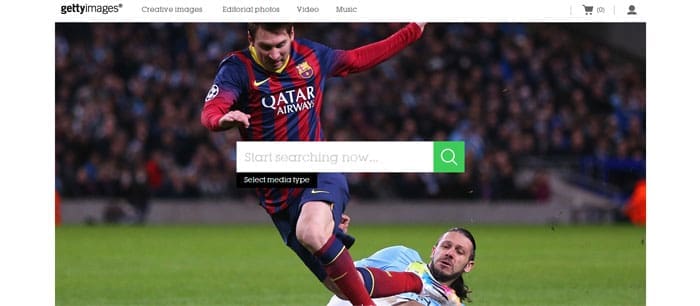Today I came across some huge news for bloggers and internet marketers alike – Getty Images is making close to 40 million of their stock art images available for free use, with only attribution to Getty as the source required.
This is a big deal. A huge deal actually. Until now, the only ways to get free images for your website were to:
- Take a photograph yourself
- Hope to find something useful and fitting via creative commons
- Make up a new image using graphic design software
Previously, Getty provided previews of their images with a watermark embedded on them. Since their prices are among the highest I’ve seen in the industry, this was a way to protect the copyrights and licensing revenues that they derive from their massive collection of over 150 million images.
The issue with the watermark is this – it didn’t really work. Sure, it kept some of us from using the images, especially those of us familiar with copyright law, DMCA, and similar usage limitation rules. But overall, we still saw images being shared and curated on social media freely without the watermark, and many others found their way into Google Images by way of Getty’s client websites. Once an image shows up in the Google SERPs on the “Images” tab, all bets are off.
Check out the industry coverage of the news below:
- The world’s largest photo service just made its pictures free to use (The Verge)
- Getty Images makes 35 million images free in fight against copyright infringement (British Journal of Photography)
- You Can Now Embed Getty Images’ Gorgeous Photos On Your Blog for Free (Gizmodo)
- ‘Free Images Online’… from Getty Images?! Getty Makes Millions of Stock Photos Free to Use (Search Engine Journal)
- Getty makes 35 million photos free to use (BBC)
Why Give Away Images For Free?
As one might guess, Getty surely has a master plan for how to monetize the free licensing of images. Quite frequently, there is a data collection / data access angle at play. Since the way they are allowing embedding of the images with full attribution is handled via an iframe, it gives them a great deal of information about who is using each image, and where.
Do take caution that, by using an iFrame, your site will also be highly unlikely to get any SEO benefit from using free images sourced via Getty. Google does NOT crawl iFrame content, so they will see a ‘black box’ essentially. If you still want to get any SEO value from the images on your site, this does not change the game for you one bit.
In turn, this does provide an additional layer of control to Getty for image search. When using the embed code, the iFrame will prevent the crawlers from being able to identify your website as the source of the image. That will be reserved for only paying customers or Getty itself.
But for those of us who don’t care about image search, go check out the offering from Getty at http://www.gettyimages.com/.
On a side note, great job of Getty from an SEO perspective. Imagine how many earned backlinks they’ll get as this news spreads on the internet. Kudos to the search strategists over at Getty!
Tommy Landry
Latest posts by Tommy Landry (see all)
- Why Most Content Strategies Fail and How to Fix Yours with SEO and AEO Alignment - August 12, 2025
- How AI Helps You Spot (and Win) New Market Opportunities - August 5, 2025
- Understanding LLMs.txt: A Signal for AI Model Training - July 29, 2025





